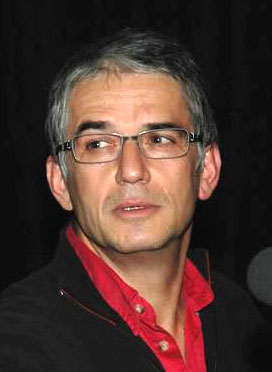Pierre Floquet
The Es-sense of Movement (Aka: Les sens du mouvement)
Abstract
This paper starts from Norman McLaren’s famous assertion, and considers some other of his quotes to question, and maybe reconsider, the essence of movement in the animating process. Arguably, things do happen within each frame. And so, when / if abstraction creates movement, what happens within each frame is just as important.
To some extent, the issue is also multicultural, as illustrated by the various values the French language gives the word sens. They are interpreted, as their ‘meanings’ are significant within the perspective of animation, and more precisely of movement.
The focus keeps on figurative animation, with main references to Gianluigi Toccafondo and Joanna Quinn. They each suggest alternative approaches to 2D drawn / painted animation that tells stories. Analysis and decoding of their respective iconographic discourses are a tentative entry point for discussion. How come would given components impact the global representation of movement, while they seem pure abstraction (ie: not strictly representative to a rationalized understanding of realism) when considered separately? What part do aesthetic approaches play when it comes to set in motion the representation of movement? How do stasis (the finite lines of the drawing) and motion (the suggested effect of the picture) combine? What about rupture and balance in movement?
As Quinn, in her film to come, somehow reflexively deconstructs the issue of animation while she has her lead character question the process of creation, one may wonder - beside Cholodenko’s claim that everything is animation – whether there might exist movement that would not be ‘animated’ per se. Rather, as part and parcel of the momentum of movement, it would suggest animation within the frames, between the in-betweens.

